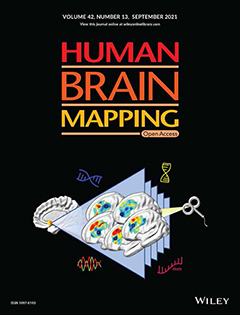

A nearby place on the left frontal lobe called Broca’s area ( 5) allows thoughts to be transformed into words. In the rearmost portion of each frontal lobe is a motor area ( 4), which helps control voluntary movement. One of the ways the frontal lobes seem to do these things is by acting as short-term storage sites, allowing one idea to be kept in mind while other ideas are considered. When you plan a schedule, imagine the future, or use reasoned arguments, these two lobes do much of the work. To understand each lobe and its specialty we will take a tour of the cerebral hemispheres, starting with the two frontal lobes ( 3), which lie directly behind the forehead. For example, a stroke in the right hemisphere of the brain can leave the left arm and leg paralyzed.Įach cerebral hemisphere can be divided into sections, or lobes, each of which specializes in different functions.

When one side of the brain is damaged, the opposite side of the body is affected. This means that the right cerebral hemisphere primarily controls the left side of the body and the left hemisphere primarily controls the right side. For instance, the ability to form words seems to lie primarily in the left hemisphere, while the right hemisphere seems to control many abstract reasoning skills.įor some as-yet-unknown reason, nearly all of the signals from the brain to the body and vice-versa cross over on their way to and from the brain. Although the two hemispheres seem to be mirror images of each other, they are different. Despite the split, the two cerebral hemispheres communicate with each other through a thick tract of nerve fibers that lies at the base of this fissure. The cerebrum is split into two halves (hemispheres) by a deep fissure. It allows you to recognize friends, read books, and play games. It holds your memories, allows you to plan, enables you to imagine and think. The cerebrum sits at the topmost part of the brain and is the source of intellectual activities. When people see pictures of the brain it is usually the cerebrum that they notice. The forebrain is the largest and most highly developed part of the human brain: it consists primarily of the cerebrum ( 2) and the structures hidden beneath it ( see " The Inner Brain"). The uppermost part of the brainstem is the midbrain, which controls some reflex actions and is part of the circuit involved in the control of eye movements and other voluntary movements. When you play the piano or hit a tennis ball you are activating the cerebellum. The cerebellum coordinates movement and is involved in learned rote movements. The hindbrain controls the body’s vital functions such as respiration and heart rate. The hindbrain includes the upper part of the spinal cord, the brain stem, and a wrinkled ball of tissue called the cerebellum ( 1). The brain can be divided into three basic units: the forebrain, the midbrain, and the hindbrain. All the parts of the brain work together, but each part has its own special properties. The brain is like a committee of experts.
HUMAN BRAIN MAPPING BOOK HOW TO
It may help you understand how the healthy brain works, how to keep it healthy, and what happens when the brain is diseased or dysfunctional. This fact sheet is a basic introduction to the human brain. At the forefront of research on the brain and other elements of the nervous system is the National Institute of Neurological Disorders and Stroke ( NINDS), which conducts and supports scientific studies in the United States and around the world. As a result, Congress named the 1990s the Decade of the Brain. Scientists have learned more about the brain in the last 10 years than in all previous centuries because of the accelerating pace of research in neurological and behavioral science and the development of new research techniques. Now, however, the brain is beginning to relinquish its secrets. The brain is the crown jewel of the human body.įor centuries, scientists and philosophers have been fascinated by the brain, but until recently they viewed the brain as nearly incomprehensible. Lying in its bony shell and washed by protective fluid, the brain is the source of all the qualities that define our humanity. This three-pound organ is the seat of intelligence, interpreter of the senses, initiator of body movement, and controller of behavior. The brain is the most complex part of the human body. The National Institute of Neurological Disorders and Stroke


 0 kommentar(er)
0 kommentar(er)
